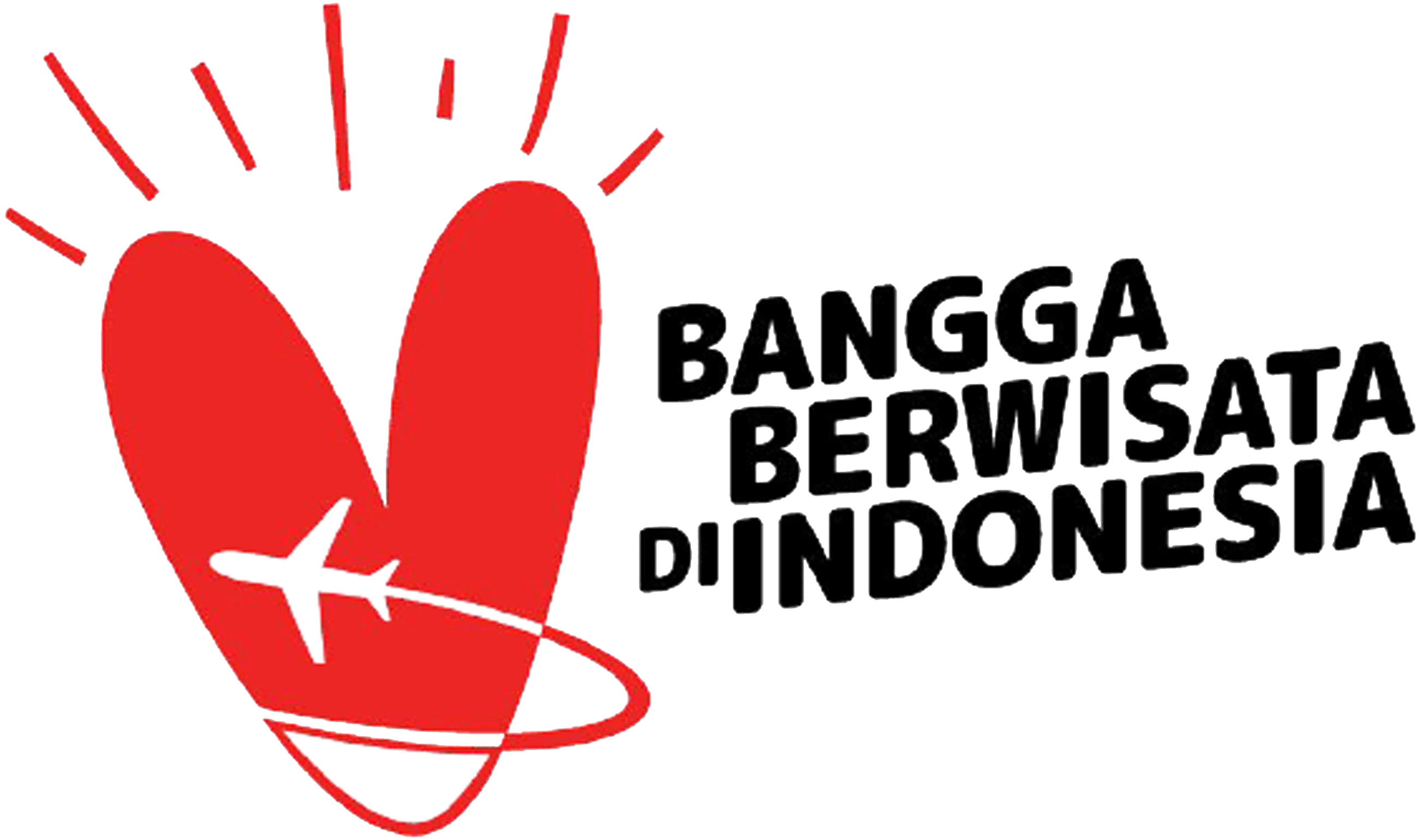What you'll do
As Indonesian residents consisting of hundreds, even thousands, of ethnicities and tribes, it's likely that many of us have friends from the Batak tribe, or perhaps you yourself are from the Batak tribe. The Batak people, originating from North Sumatra, have long journeyed from their homeland to various major cities in Indonesia in pursuit of honor and success. When Batak people leave their hometowns, they don't just bring themselves but also their traditions and customs. According to The Ethnic Profile of Djakarta, the Batak people first migrated to Jakarta in 1907. Since then, they have established their presence in the city with Batak villages, churches, and traditional Batak eateries. This has also happened in other cities where the Batak tribe has migrated. To learn more about the Batak tribe and its history, let's visit these 5 Batak museums around Lake Toba:
As Indonesian residents consisting of hundreds, even thousands, of ethnicities and tribes, it's likely that many of us have friends from the Batak tribe, or perhaps you yourself are from the Batak tribe. The Batak people, originating from North Sumatra, have long journeyed from their homeland to various major cities in Indonesia in pursuit of honor and success. When Batak people leave their hometowns, they don't just bring themselves but also their traditions and customs. According to The Ethnic Profile of Djakarta, the Batak people first migrated to Jakarta in 1907. Since then, they have established their presence in the city with Batak villages, churches, and traditional Batak eateries. This has also happened in other cities where the Batak tribe has migrated. To learn more about the Batak tribe and its history, let's visit these 5 Batak museums around Lake Toba:
Your itinerary
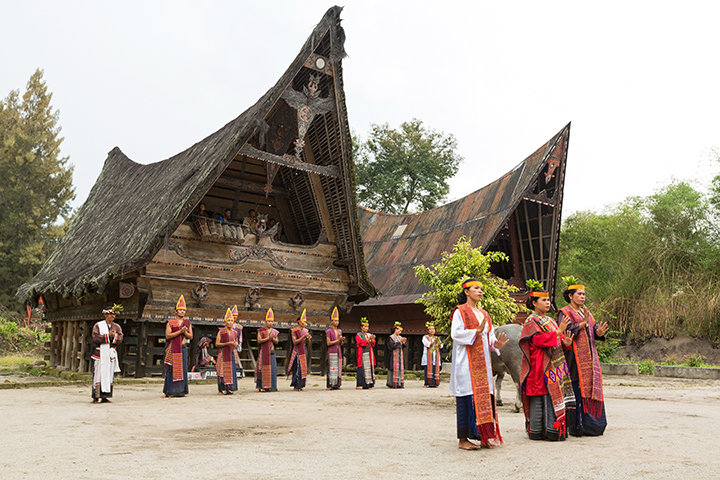
1. Museum Huta Bolon Simanindo
Located on the northern side of Samosir Island, the Huta Bolon Simanindo Museum was once the residence of King Sidauruk and his 14 wives before opening to the public as a museum in 1969. The museum's collection includes ancestral relics of the Batak Toba people from Samosir, such as parhalaan, pustaha laklak, tunggal panaluan, and solu bolon. The museum building, an example of traditional Batak architecture, provides a unique and beautiful photo backdrop. If you visit at 10:30 AM or 11:45 AM, you can watch a tortor dance performance with the sigale-gale statue.
Located on the northern side of Samosir Island, the Huta Bolon Simanindo Museum was once the residence of King Sidauruk and his 14 wives before opening to the public as a museum in 1969. The museum's collection includes ancestral relics of the Batak Toba people from Samosir, such as parhalaan, pustaha laklak, tunggal panaluan, and solu bolon. The museum building, an example of traditional Batak architecture, provides a unique and beautiful photo backdrop. If you visit at 10:30 AM or 11:45 AM, you can watch a tortor dance performance with the sigale-gale statue.
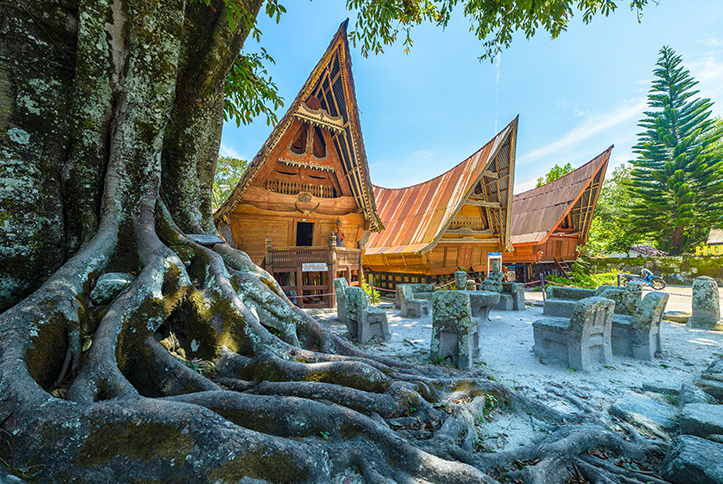
2. Museum Tomok
In addition to Huta Bolon Simanindo Museum, Samosir Island also features the Tomok Museum, established in 2005. The museum is built in the style of Rumah Bolon, the traditional Batak Toba house for kings and their families. Here, you can see various Batak carvings and ornaments known as Gorga. The museum also houses high historical value items, such as ancient weapons, traditional agricultural tools, and kitchen utensils. Besides daily items from the past, there are also cultural artifacts like wooden statues and various ulos woven fabrics with different motifs.
In addition to Huta Bolon Simanindo Museum, Samosir Island also features the Tomok Museum, established in 2005. The museum is built in the style of Rumah Bolon, the traditional Batak Toba house for kings and their families. Here, you can see various Batak carvings and ornaments known as Gorga. The museum also houses high historical value items, such as ancient weapons, traditional agricultural tools, and kitchen utensils. Besides daily items from the past, there are also cultural artifacts like wooden statues and various ulos woven fabrics with different motifs.
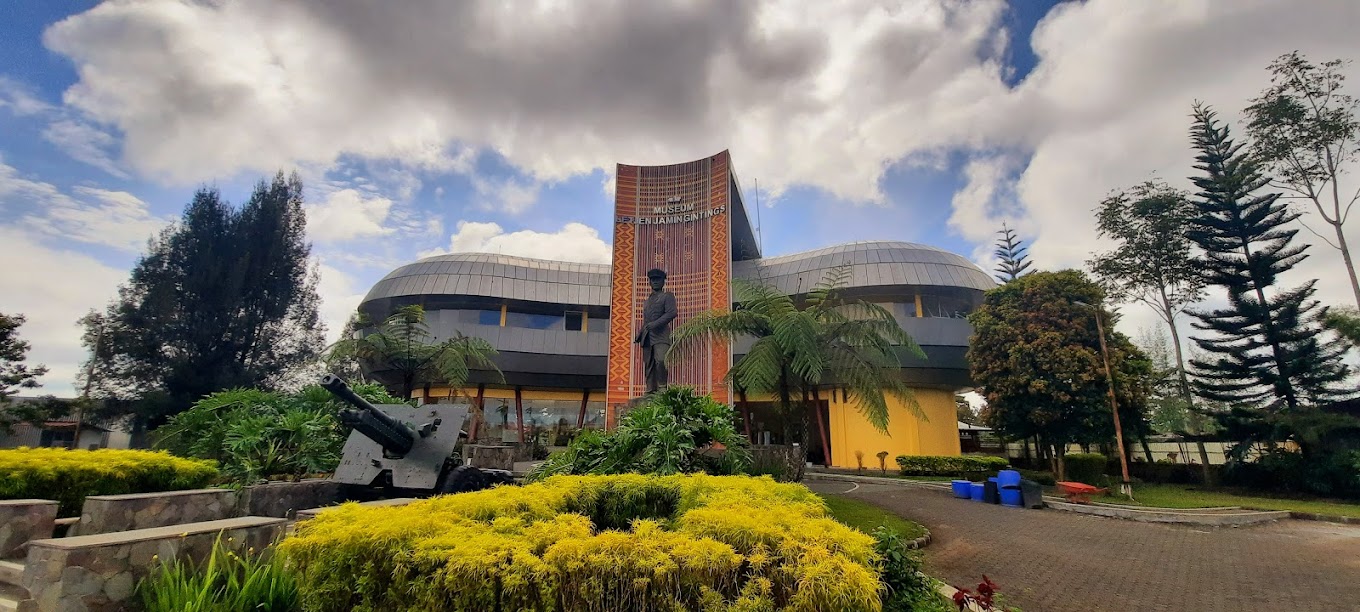
3. Museum Letjen Jamin Gintings
The Letjen Jamin Gintings Museum honors the National Hero Letjen Jamin Ginting, who fought during the Japanese occupation and the Dutch Military Aggression I and II. Located in Suka Village, Karo Regency, North Sumatra, the museum was founded in 2011 and inaugurated by the Indonesian Minister of Defense in 2013. It features personal belongings of Letjen, his life records from birth to death, and collections of typical Karo artifacts and miniature Karo traditional houses. The museum's building resembles a peanut, symbolizing protection against rain, storms, and sun. In addition to historical artifacts, the museum also offers local Karo Batak cuisine prepared by local vendors in the museum grounds.
The Letjen Jamin Gintings Museum honors the National Hero Letjen Jamin Ginting, who fought during the Japanese occupation and the Dutch Military Aggression I and II. Located in Suka Village, Karo Regency, North Sumatra, the museum was founded in 2011 and inaugurated by the Indonesian Minister of Defense in 2013. It features personal belongings of Letjen, his life records from birth to death, and collections of typical Karo artifacts and miniature Karo traditional houses. The museum's building resembles a peanut, symbolizing protection against rain, storms, and sun. In addition to historical artifacts, the museum also offers local Karo Batak cuisine prepared by local vendors in the museum grounds.
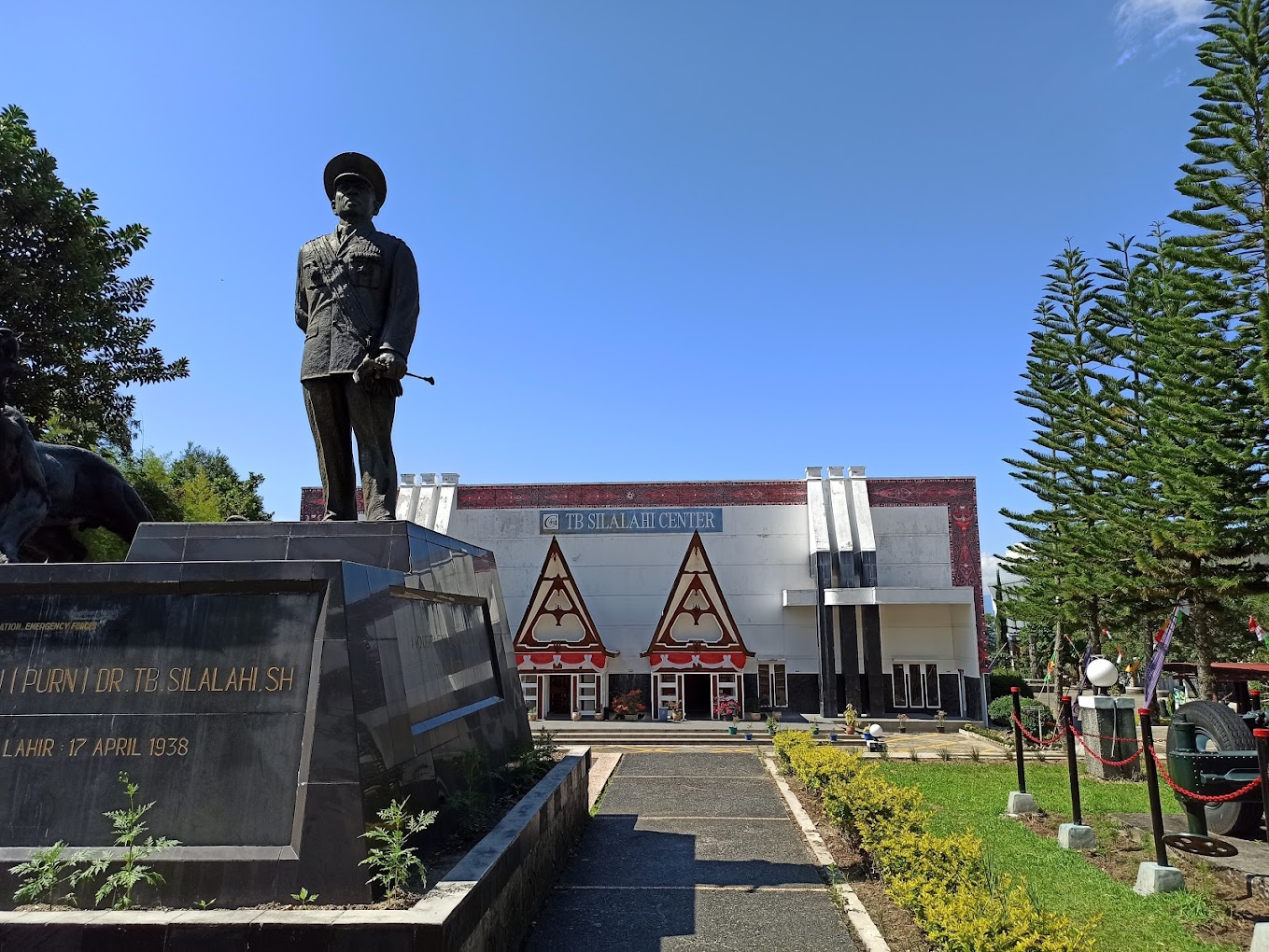
4. Museum Batak TB Silalahi Center
North Sumatra is also the birthplace of another national hero, TB Silalahi. His legacy is preserved in a private museum located in Silalahi Village, Toba Samosir Regency, North Sumatra. The museum holds personal items from TB Silalahi’s youth as a buffalo herder to his final years as a General. It aims to unite the six Batak sub-ethnic groups in North Sumatra—Toba, Simalungun, Karo, Mandailing, Angkola, and Pakpak—and inspire Batak youth through TB Silalahi’s achievements.
North Sumatra is also the birthplace of another national hero, TB Silalahi. His legacy is preserved in a private museum located in Silalahi Village, Toba Samosir Regency, North Sumatra. The museum holds personal items from TB Silalahi’s youth as a buffalo herder to his final years as a General. It aims to unite the six Batak sub-ethnic groups in North Sumatra—Toba, Simalungun, Karo, Mandailing, Angkola, and Pakpak—and inspire Batak youth through TB Silalahi’s achievements.
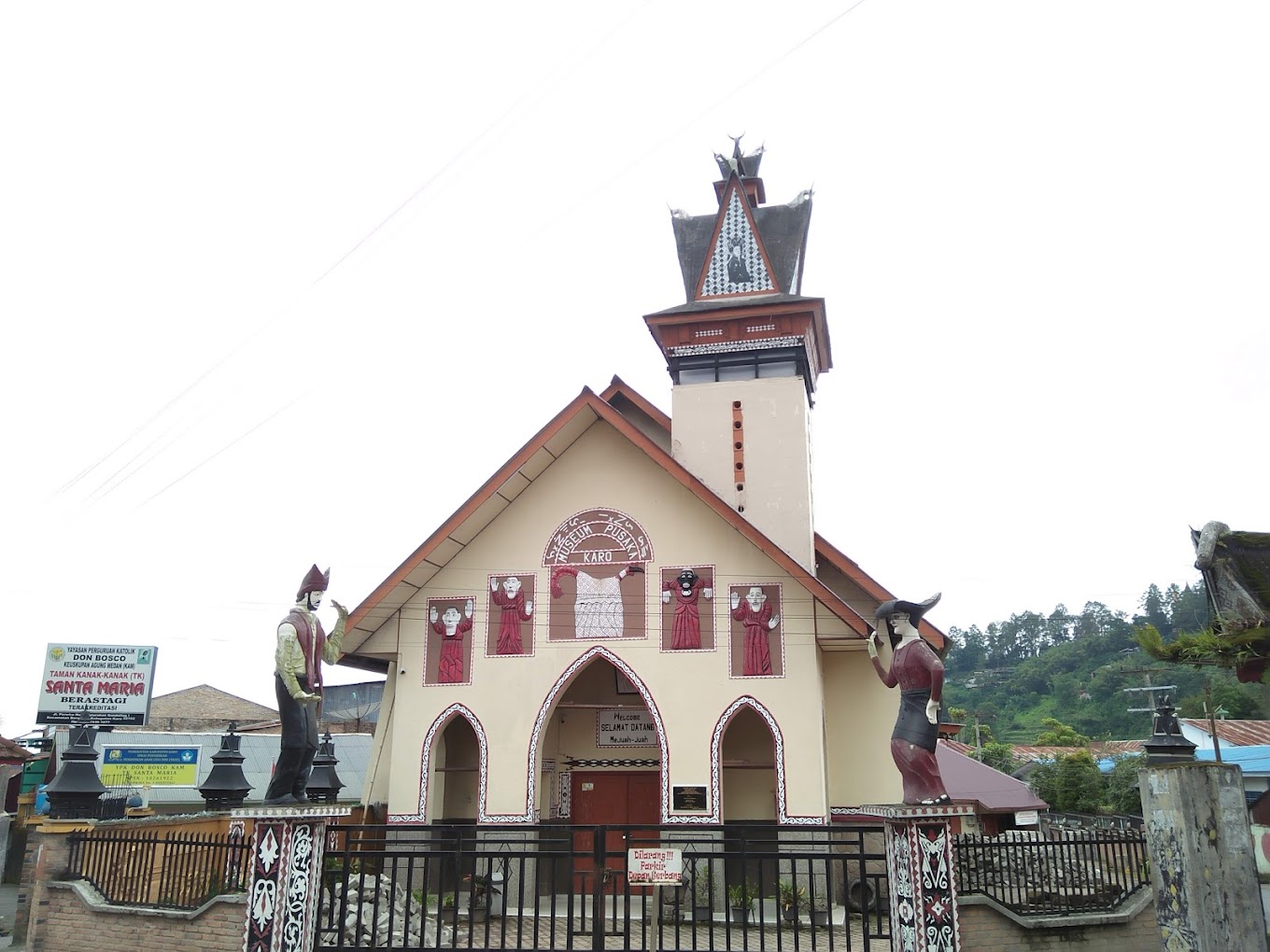
5. Museum Pusaka Karo
At this museum, you can delve into one of the Batak sub-ethnic groups in North Sumatra, the Karo. Originally a Catholic Church of Santa Maria, the museum was initiated by Dutch missionary Joosten Leonardus Edigius. It houses 800 antique items dating back to the 1700s and conserves current Karo traditional artifacts donated by local Karo people. The museum displays agricultural tools, carpentry tools, hunting tools like amak mbelang and amak cur (woven mats), and betel nut containers with various carvings. There are also ancient Karo Batak manuscripts written on tree bark with resin ink.
At this museum, you can delve into one of the Batak sub-ethnic groups in North Sumatra, the Karo. Originally a Catholic Church of Santa Maria, the museum was initiated by Dutch missionary Joosten Leonardus Edigius. It houses 800 antique items dating back to the 1700s and conserves current Karo traditional artifacts donated by local Karo people. The museum displays agricultural tools, carpentry tools, hunting tools like amak mbelang and amak cur (woven mats), and betel nut containers with various carvings. There are also ancient Karo Batak manuscripts written on tree bark with resin ink.



